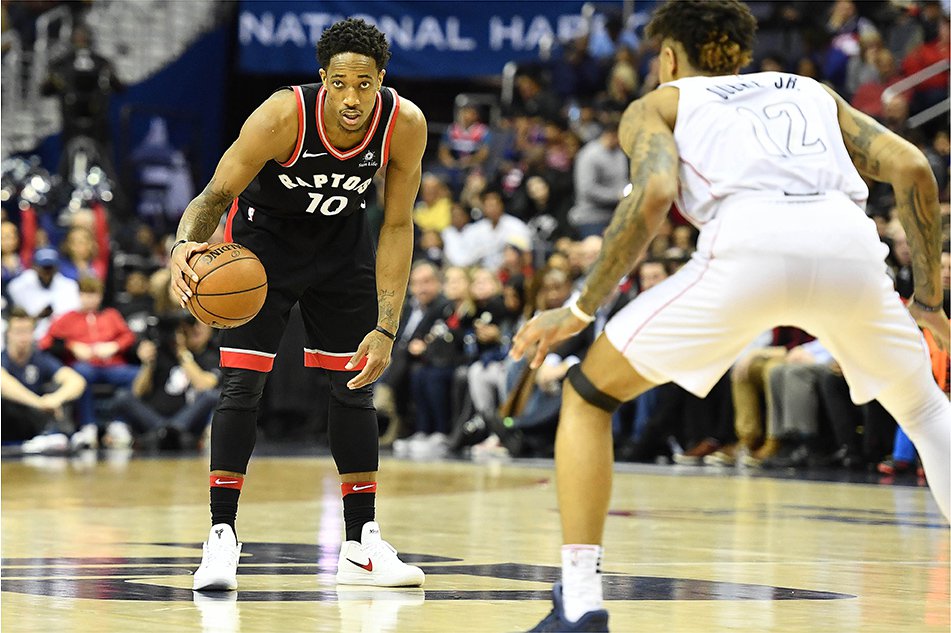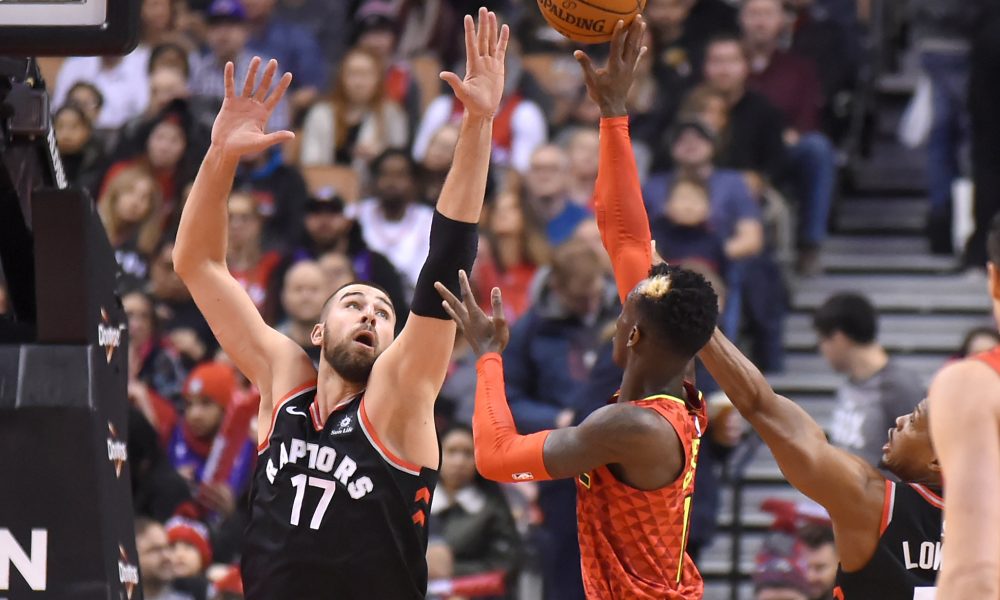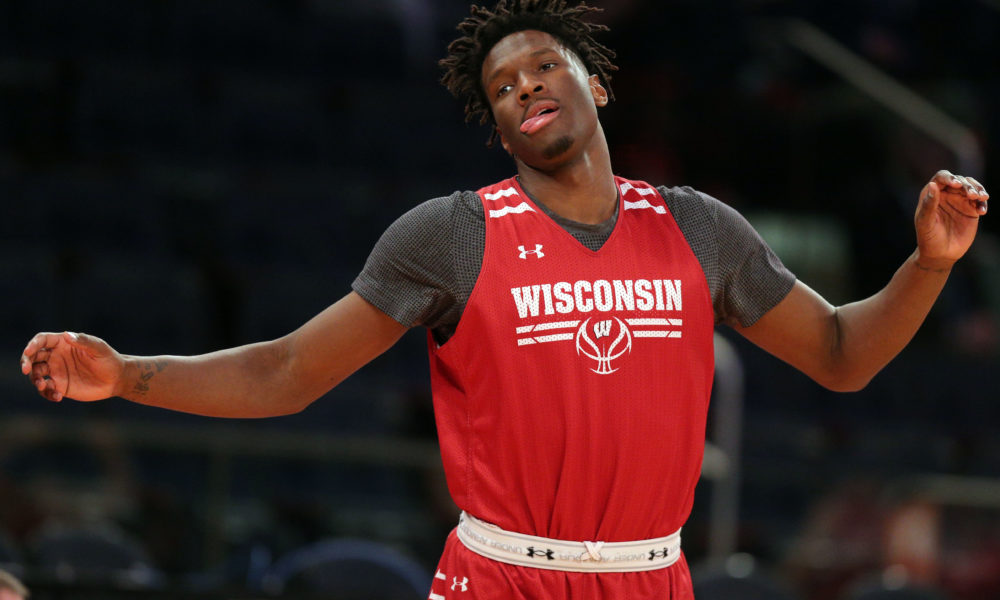Nothing worth having comes easy.
Think about it: The greater the struggle, the more satisfactory the reward. There is an honour in perseverance, resulting in a well-earned certainty etched upon the faces of those scarred from their labours.
This is true for the vast majority of great NBA teams (unless you’re the Golden State Warriors of the past couple seasons). At some point, they hit bumps in the road. There appears before them something that they must overcome, and when they manage to do it, as destiny sees fit, they become the absolute best version of themselves.
For the Toronto Raptors, those bumps in the road are more like moguls, and they manifest themselves in the form of clutch basketball. All season long, the last five minutes of tight games have found the Raptors floundering and flailing, looking discombobulated and hesitant as they’ve reverted to isolation possessions, run messy plays, and forced themselves into unnecessarily difficult positions.
But with reps come results, and this Raptors group is nothing if not resilient. The last couple games (against Washington and then Charlotte) both boiled down to the last few minutes, and wouldn’t you know it, the Raptors came out on top. Neither clutch performance was absolutely perfect (although closing against Washington was much better), but in both there were good things to take away, things Dwane Casey can use as the basis of a blueprint for future close games.
One such thing is using DeMar DeRozan as the primary ball-handler. In a piece earlier this season, I mentioned that you’d ideally love DeRozan to become adept at moving off-ball, and that running plays for him would subsequently become easier and could be made more complex. However, with DeRozan’s vastly improved passing this season, allowing him to the run the show when he’s locked in is proving to be another good option.
Here, he brings the ball up the floor and patiently waits for the Kyle Lowry screen to come to him. Chris McCullough jumps out at him for a second, but quickly retreats, leaving Kelly Oubre to switch onto him. But by that time, DeRozan has already noticed the wide-open lane down the center of the key and bursts towards the hoop. As soon as Marcin Gortat slides over to help, DeRozan dumps off the ball to a well-positioned Jakob Poeltl along the baseline, who follows up with a one-handed jam.
Simple and gorgeously executed. Clutch time doesn’t need to be difficult when one of your All-Stars is making reads like that.
DeRozan hasn’t missed a game this season, and he’s played the most clutch minutes out of anyone on the roster. In games where they’ve lost in crunch time, DeRozan has a total of just two made assists—but in games where they’ve won, he has a total of seven made assists, by far the most on the team. This may not seem like much, but when you consider that DeRozan is typically either taking shots himself or passing the ball to keep it moving, it becomes more important. The Raptors are better when he’s able to channel the controlled version of himself, the guy who is cool under pressure, the guy who attacks in order to find the best option, not simply to score.
This doesn’t mean he shouldn’t look to score at all, however. When DeRozan is in his dishing mindset, the threat of that ability will sometimes allow him good looks—looks that he would be foolish not to take.
On this play, for example, both Poeltl and Fred VanVleet come up to screen for DeRozan, who gets the switch onto the slower-footed Markieff Morris. Morris fails to take away DeRozan’s right hand, and the latter bolts by him. Poeltl is standing just under the hoop, but this time he helps clear space beneath the basket, knowing that with DeRozan already past Morris, there will be no resistance for the All-Star to score. Of course, that’s just what happens.
While DeRozan has demonstrated his vital importance to the club during these late moments, it’s not all about him, either. The ball movement in general was better when the Raptors won their last two matchups, with the team (for the most part) keeping the ball humming and not stopping the flow to allow the defense time to choke whatever options were there moments earlier.
Like a Katy Perry song, C.J. Miles can be hot or cold, but in the game against Washington, he was en fuego. Throw in the fact that he’s a good off-ball player and he displayed how deadly he can be, dropping 6–9 from deep on the Wiz. But Miles isn’t a guy who can get his own shot very easily, and defenses know enough to crowd him on the perimeter, which is why his effectiveness is increased exponentially when Toronto is slinging the ball around to create open looks for him.
Here, VanVleet brings the ball up the floor and sees Miles on the weak side with no one (seriously, Wizards?) paying any attention to him. VanVleet receives a Poeltl screen and smartly never takes a second to pause, barreling down the middle of the key as both Gortat and Morris are forced to close in on him. Morris realizes only just then (and too late) that Miles has slipped quietly to the corner, and by the time VanVleet’s dime touches Miles’ hands, it’s money.
In another example that requires more work, VanVleet hands the ball off to DeRozan, who rotates to the top of the arc. He fires the ball to VanVleet, who immediately sends it back. Lowry then comes through, receiving the ball from DeRozan. By this point, not much has developed, and the shot clock is at seven seconds. Lowry puts his head down and charges forward, kicking the ball back out to VanVleet, who has come up from the corner to find himself open. However, he sees an opponent closing quickly, so he drives forward as Lowry backs out to beyond the three-point line—another gorgeous pass from VanVleet, who’s in the thick of things in the paint, and Lowry is set up for a great look off a catch-and-shoot three, which he is fantastic at making. It doesn’t fall, but those are exactly the shots Casey wants.
And then there are times, like in the Charlotte game, where your best players just make tough shots.
Those sorts of shots shouldn’t necessarily be a part of the blueprint, but like them or not, they’re going to happen sometimes, and the Raptors are going to be in positions where big plays need to be made by their All-Stars. It’s just how the game goes.
The defense has also been impressive during the last two showings, with only a moment or two of letup. Toronto has a clutch time defensive rating of 78.9 in this span, swallowing opponents with their versatility and effort. The bigs have been fundamental in this respect, whether it’s Jonas Valanciunas dominating the glass against the Hornets or Poeltl flying around in the half-court against the Wizards.
Here’s a play from the latter, in which Morris finds Tomas Satoransky left wide-open in the corner by Lowry. The Raptors guard is late to close out on him, and Satoransky drives along the baseline, forcing Poeltl to come out to help. Satoransky makes the right play, passing the ball to Gortat, who’s now by himself in the center of the key. But Poeltl recovers with supreme speed, turning and pinning the ball on the glass from behind the opposing big man.
It also should be noted that over these two games the closing lineups have been fluid, and credit needs to be given to Casey. He’s made the right moves each time, creating the best matchup he can from his deep roster. Leaving Valanciunas out against the Hornets, for example, when they were going with Cody Zeller and Frank Kaminsky, was a great choice, because those two are slow-footed, lumbering bigs, whom Valanciunas can easily get the best of.
Or how about leaving Miles, who had the hot hand, on the floor to close against the Wizards? Another smart choice.
The Raptors obviously haven’t resolved everything about their crunch time issues. There are still lots of flaws in how they approach individual possessions, how they occasionally forget about little details (such as the time remaining on the shot clock), how the perimeter players communicate on switches, etc. But if you’re going to run, you have to learn to walk first, and Toronto is finally dusting off its knees and getting to its feet to take those initial, glorious steps.
It’s been a struggle. There’s no doubt about that. But as progress continues and the playoffs loom ever closer, each of these instances push the Raptors towards the reward they ultimately seek: Clutch dominance.
And certainly, that’s a reward worth having.



